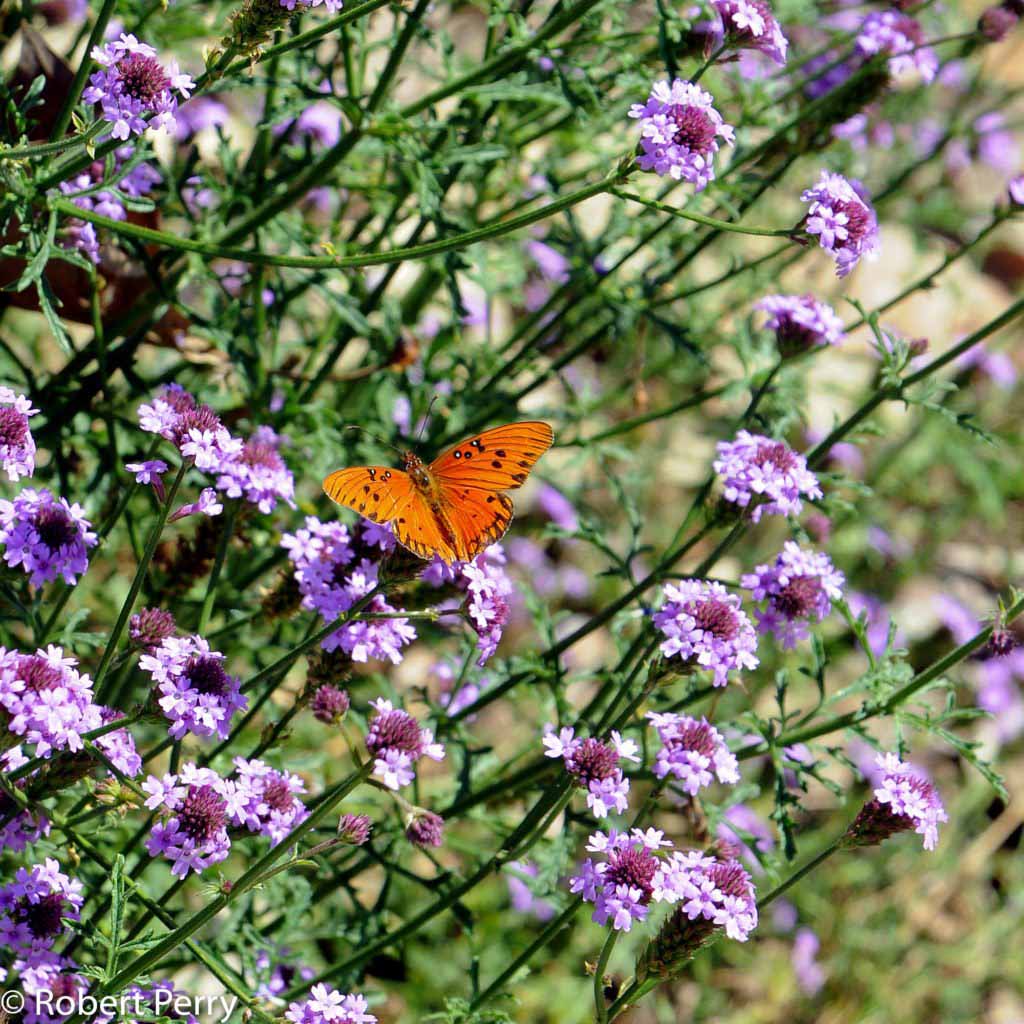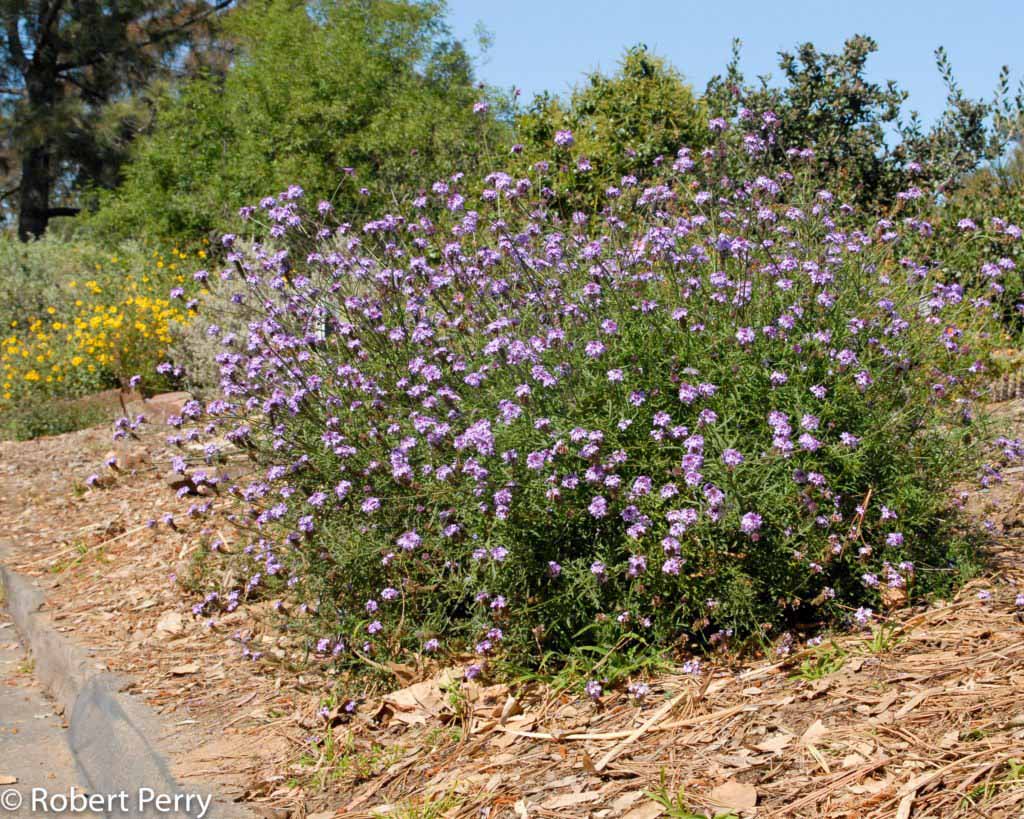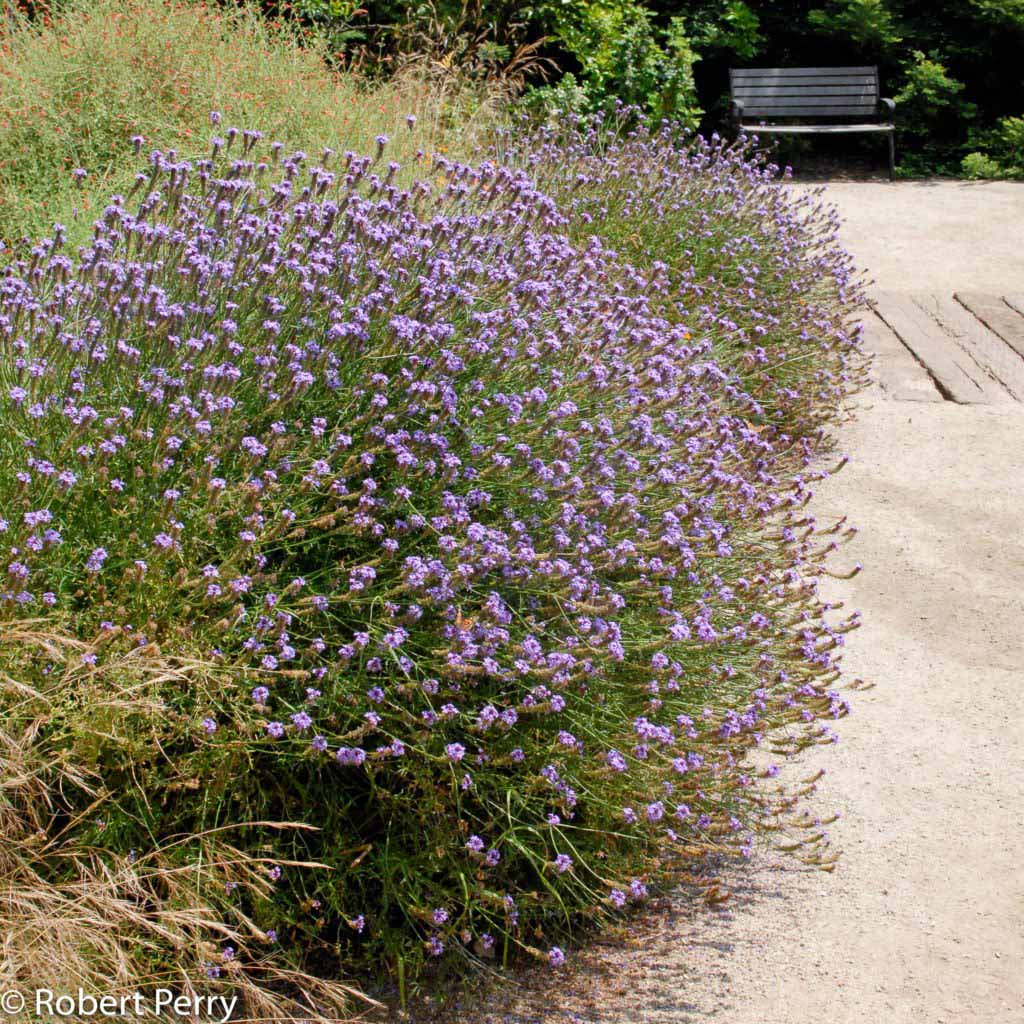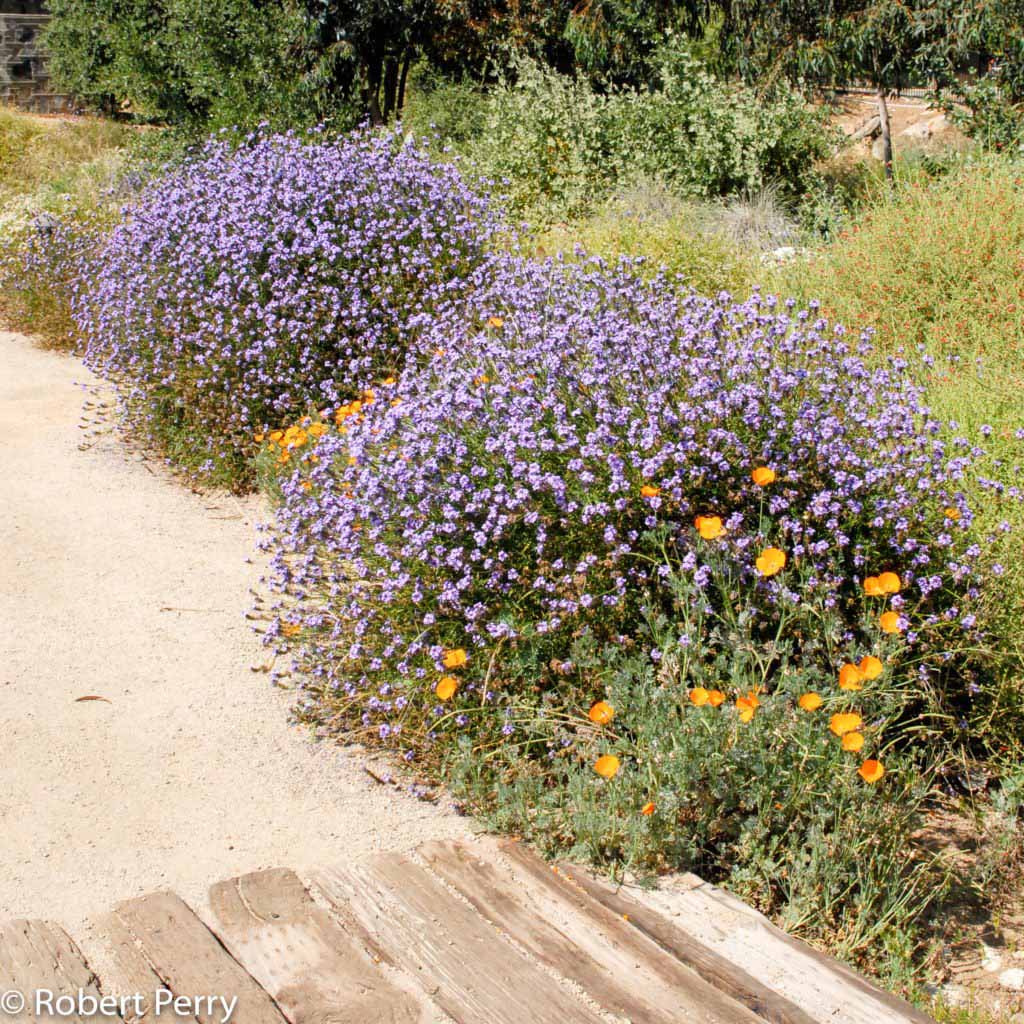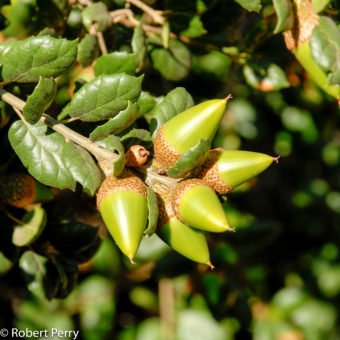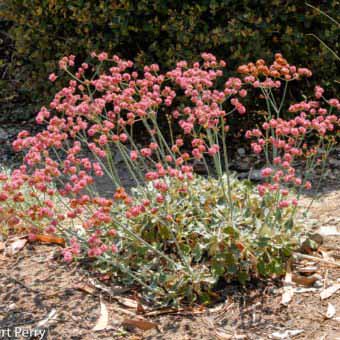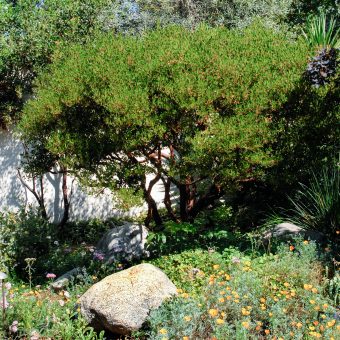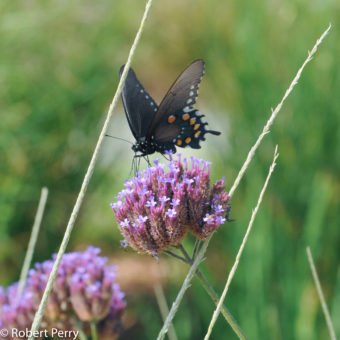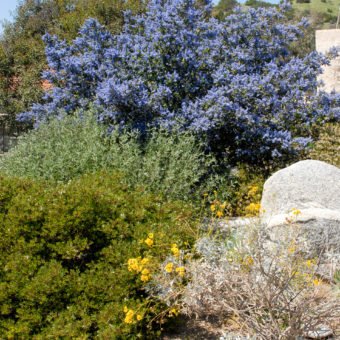Lilac verbena and its cultivars grow well in Inland Empire gardens in areas of full sun and with low amounts of supplemental water. The chart shown below provides a recommended baseline guide to the monthly irrigation schedule and volume of supplemental water needed to maintain healthy growth throughout the average year. As shown in the chart below, there are several months indicated by an asterisk (*) when winter rains can provide sufficient moisture and irrigation is not needed. The high and low range of moisture indicates it can grow with varying amounts of water and you should make irrigation adjustments based on field observations of growth and character.
| |
Jan* |
Feb* |
Mar* |
Apr |
May |
Jun |
Jul |
Aug |
Sep |
Oct |
Nov* |
Dec* |
| Runs per Month |
0x to 2x |
0x to 2x |
0x to 2x |
1x to 2x |
1x to 2x |
1x to 2x |
1x to 2x |
1x to 2x |
1x to 2x |
1x to 2x |
0x to 2x |
0x to 2x |
| Inches per Run |
1″ |
1″ |
1″ |
1″ |
1″ |
1″ |
1″ |
1″ |
1″ |
1″ |
1″ |
1″ |
| |
| Inches per Month |
0″ to 2″ |
0″ to 2″ |
0″ to 2″ |
1″ to 2″ |
1″ to 2″ |
1″ to 2″ |
1″ to 2″ |
1″ to 2″ |
1″ to 2″ |
1″ to 2″ |
0″ to 2″ |
0″ to 2″ |
Range of supplemental summer water: 7"-14"
Range of supplemental winter water: 0"-10"
| |
0″-2″ |
0″-2″ |
0″-2″ |
1″-2″ |
1″-2″ |
1″-2″ |
1″-2″ |
1″-2″ |
1″-2″ |
1″-2″ |
0″-2″ |
0″-2″ |
| |
Jan* |
Feb* |
Mar* |
Apr |
May |
Jun |
Jul |
Aug |
Sep |
Oct |
Nov* |
Dec* |
For more information on how to use this Irrigation Schedule and Graph, follow this link.
For information how to calculate your irrigation system’s schedule and precipitation rate, please follow this link.
Prune back about 1/3 of the leafy part of the stems each at least once a year to maintain nice form and leaf quality and to encourage new growth. This is best done after flowering in the fall or winter either with a pruner, or much more quickly with a manual hedge shear, cutting back into a nice roundish dome-like shape. Plants will rapidly begin to regrow. If desired, spent flower stems can be removed through the flowering season. this may extend the flowering season, but can be quite a lot of work if you have multiple plants. In many inland gardens, cutting back twice per year can be optimal for garden performance: Cut back once in late spring / early summer after spring blooms start to fade. Plants will grow back rapidly and rebloom. Then cut back in fall. It is best to avoid a significant cut back during the peak hot summer months if possible (S).
References